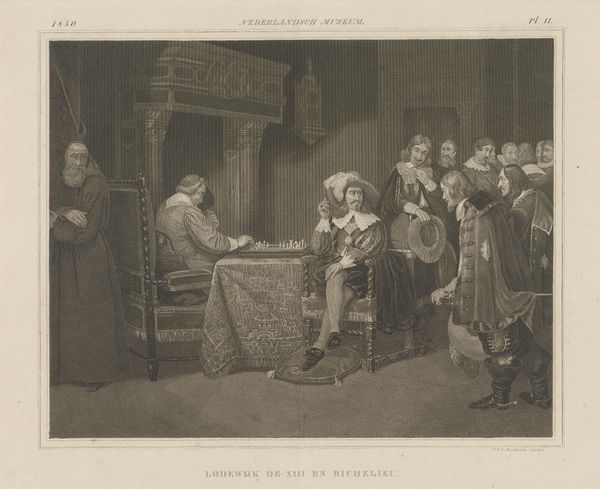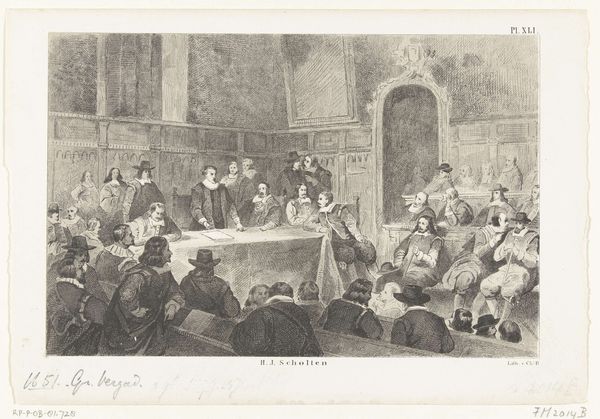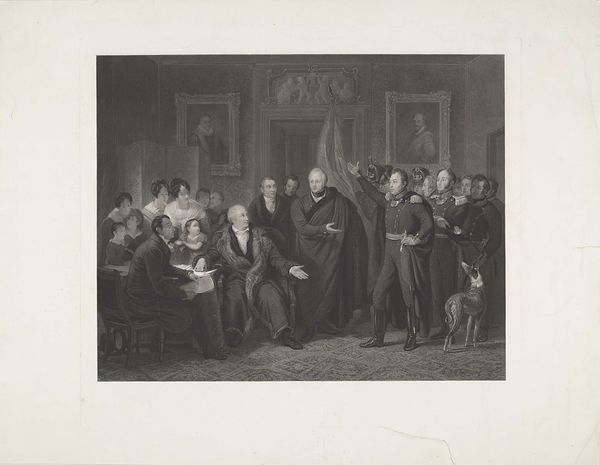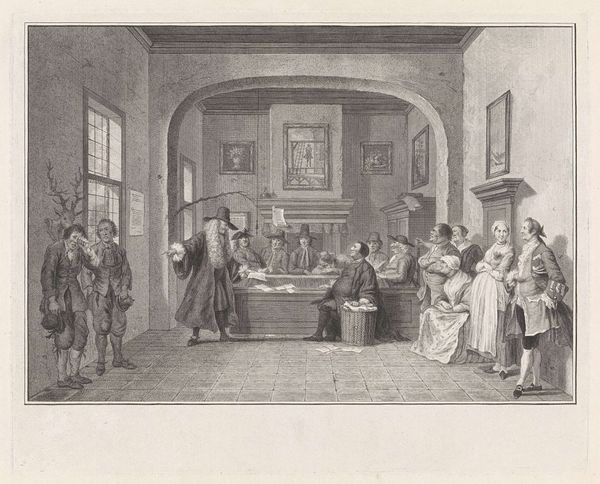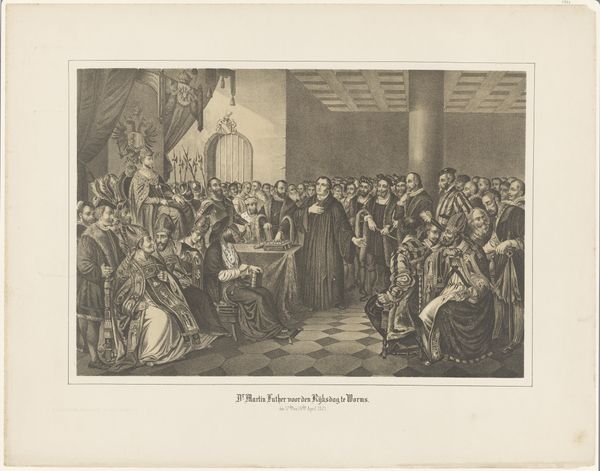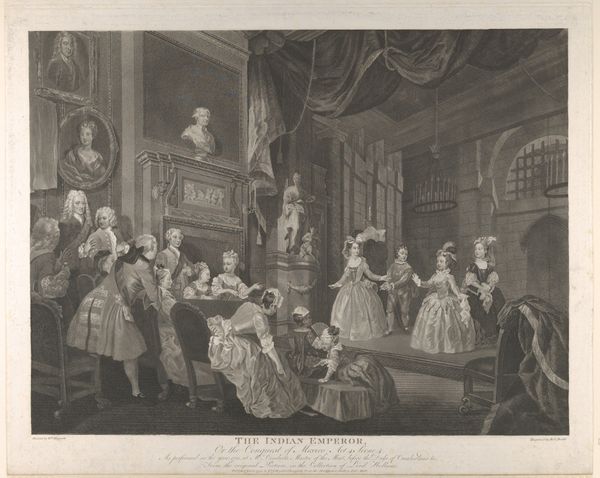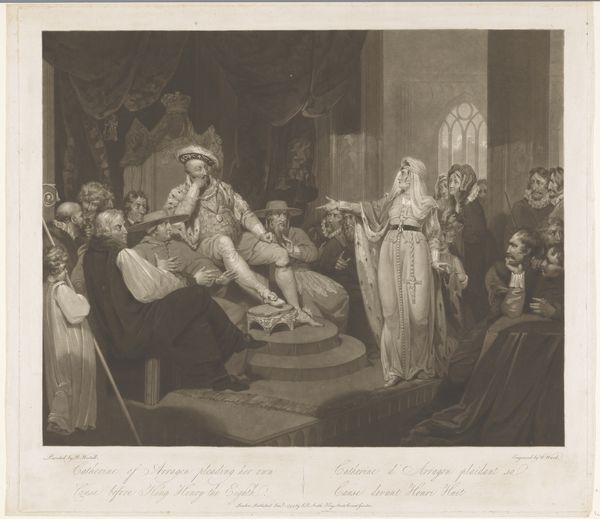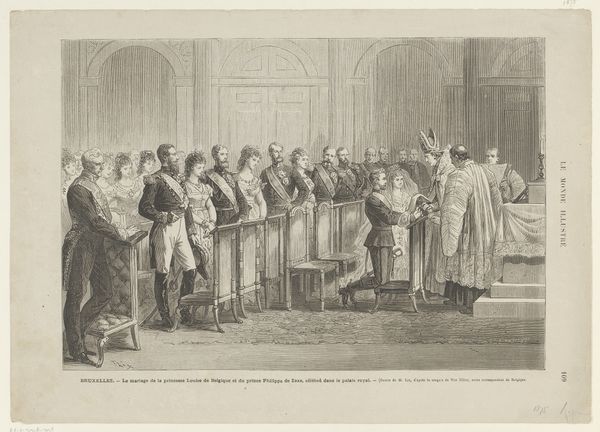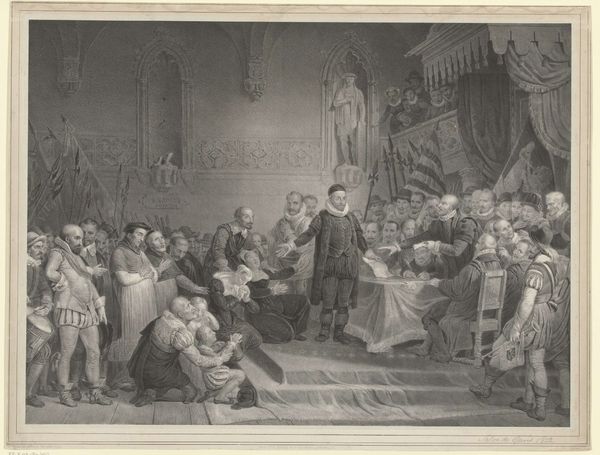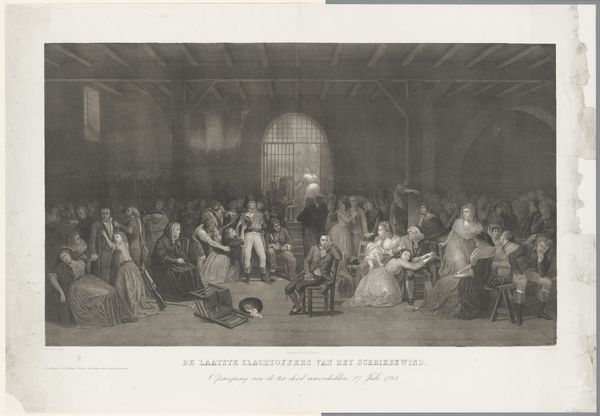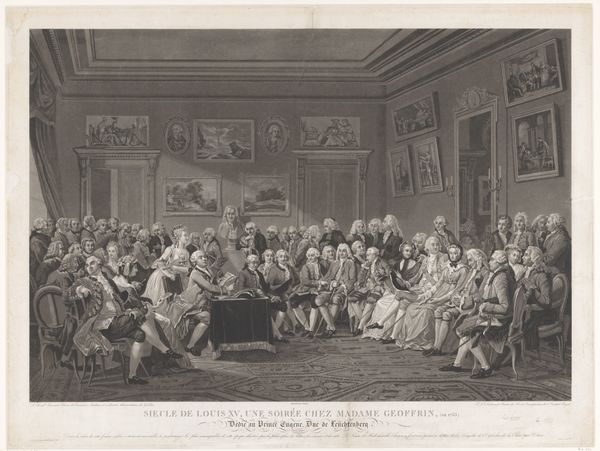
Pilgrim Fathers op een bijeenkomst in Noord-Amerika, 21 januari 1621 1857 - 1878
0:00
0:00
augustallebe
Rijksmuseum
print, engraving
#
narrative-art
# print
#
group-portraits
#
history-painting
#
academic-art
#
engraving
#
realism
Dimensions: height 517 mm, width 715 mm, height 687 mm, width 914 mm
Copyright: Rijks Museum: Open Domain
Curator: At first glance, I am struck by the solemnity of this scene, despite its crowded composition. The dramatic lighting, contrasting darks and highlights, adds a layer of tension and emotional weight. Editor: You are speaking of "Pilgrim Fathers op een bijeenkomst in Noord-Amerika, 21 januari 1621". August Allebé created this engraving sometime between 1857 and 1878. The fine, precise lines that comprise the engraving offer detail and tonality. I find it intriguing how a relatively inexpensive print medium serves to communicate the arrival of a class of immigrants. It brings into question accessibility versus social standing and visibility. Curator: A fascinating tension, certainly! Observe how Allebé arranges the figures within the composition to guide our eye. The minister stands centrally, illuminated, becoming the focal point, with the other figures framing his spiritual authority. His open gesture invites attention and also offers inclusion of those willing to partake. It becomes visually apparent how the other figures are aligned for inclusion, and how their expressions convey devotion, and their solemn presence reinforces the significance of the assembly. Editor: Consider how the scene and the medium would have circulated, most probably as a middle-class commodity, creating and feeding into ideas about American heritage. The material limitations of print – the gradations achievable, the potential for mass production – shapes the story that is told, placing emphasis on specific emotional and moral content, instead of all others. Curator: True. Although, despite being a reproductive medium, there's a distinct artistic style and arrangement—observe the academic realism employed here. Note the treatment of light, how it sculpts the figures. The visual realism offers a compelling visual narrative of community and resolve, one in tension with what appears as an impoverished materiality. The image speaks volumes through its considered organization. Editor: Absolutely. The production of the engraving itself could tell its own parallel narrative of artistry and labor, distribution networks, the engraver's access to the historical source material. Each element reveals something of Allebé's social, and potentially even economic standing. The history isn't only in the depicted scene; it's embedded in the artwork's own journey and how it reaches an audience. Curator: A compelling argument to consider both form and context, offering different perspectives on such visual storytelling. Editor: Precisely; acknowledging the making broadens and potentially disrupts interpretations of a collective past.
Comments
No comments
Be the first to comment and join the conversation on the ultimate creative platform.
